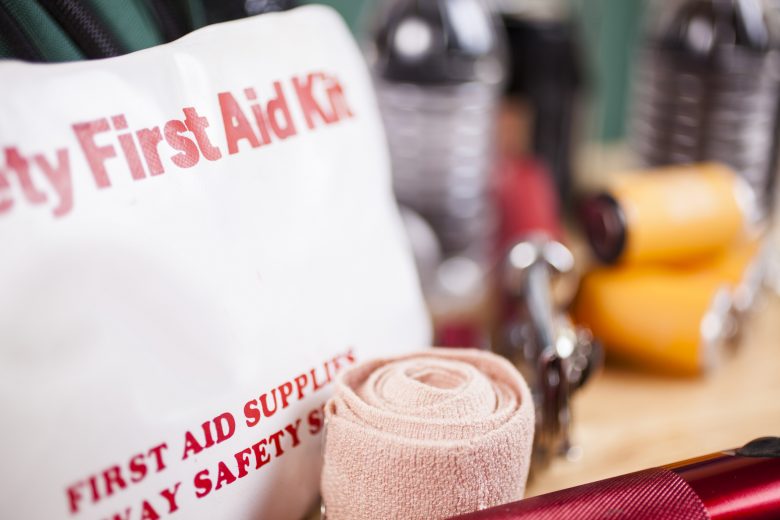Emergency preparedness and first aid training can be the difference between life and death. Even with the best precautions and safety programs, every workplace needs to be prepared for injuries, sudden cardiac arrests (SCA) and other medical emergencies. The average survival rate for victims of SCA is one in 10. However, when they receive CPR while waiting for emergency services, their chances of survival grow. Every minute counts in an emergency and it’s important to the health and safety of your workers that everyone is prepared for such situations.
When planning for a first aid program, begin by considering workplace-specific risks of injury or illness. Then you need to design and implement an OSHA-compliant program that addresses these risks and focuses on minimizing the outcome of injuries and exposures. Here are the things to consider when designing a workplace first aid plan:
- Invest in first aid supplies (e.g., bandages) and equipment (e.g., automated external defibrillators) and ensure they are easy to access.
- Choose the right types of first aid supplies, as they must be adequate to the kinds of injuries that are most likely to occur in your workplace.
- OSHA standards require training in cardiopulmonary resuscitation (CPR) when asphyxiation, electrocution or exertion could cause SCA. Even if you’re not required to provide such training, consider it anyway. It could save a life.
- Remember that automated external defibrillators (AED) should be installed in enough accessible locations to ensure a response within 3-5 minutes.
- Maintain first aid supplies at the right level and at optimal performance.
- Research the average EMS response times in your area and remember to include different times of day and night in your written plan if you have workers present on site 24/7. Consider speaking with local emergency services (fire, medical, etc.) to receive more information on response times and possible first aid program suggestions.
- Decide who your workplace first aid providers should be. Ensure they receive training suitable to your organization and offer refresher first aid courses on a regular basis. Some elements of the training may be optional to your workplace, and working conditions could require adding customized elements to your training program. As a result, you should thoroughly study your options and all influencing factors before designing your first aid training.
- Provide all workers with information about the first aid program.
- Put your program in writing and schedule evaluation and relevant changes to keep it current. It’s easier to improve and build on your first aid plans if they are in writing.
Designing your first aid plan is only the beginning. It also has to be communicated clearly throughout the workforce and employees need to be trained on their role in first aid scenarios. This is one of the reasons why a written plan is helpful—it’s easier to communicate it to all employees and you can provide each of them with a copy. It’s also a good idea to provide the plan in multiple languages if you employ people who don’t speak English fluently.
Furthermore, when investing in first aid supplies and equipment, consider additional materials relevant to injuries common to your profession. For example, if foreign objects in eyes are a possibility, invest in eye washing stations. If losing a finger is a potential risk, make sure that there is always ice available for transporting severed digits to the hospital.
In an emergency, emotions run high and it’s easy to forget that there’s a plan in place for such events. Refresher sessions are important because even the best plan is useless if it gathers dust in an office. Executing your plan, preparing first aid training and providing refresher courses can save someone’s life if, despite safety precautions, an incident takes place at your workplace. So do your research, prepare and continually review your plans to improve upon them. Being prepared for an emergency takes effort but the time spent on it is never wasted.

